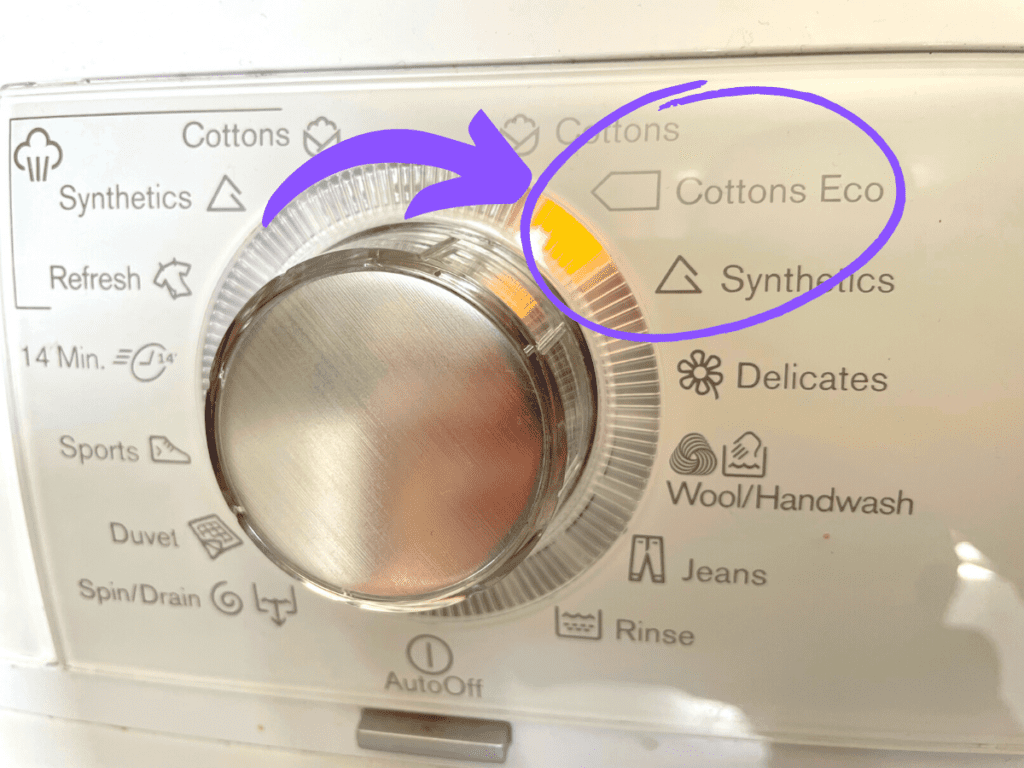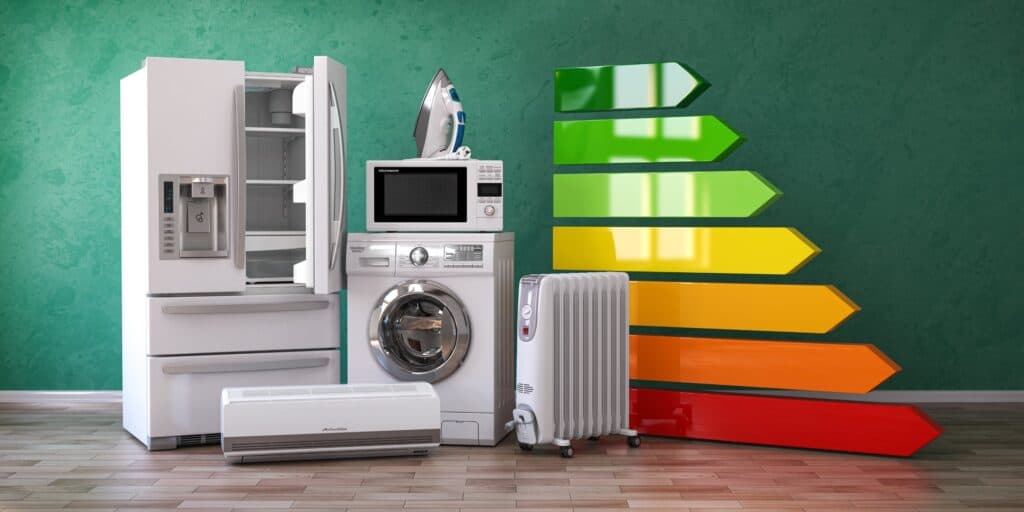Whether we’re washing the laundry or the dishes, you’re always concerned about results. You want the clothes to come out looking good and smelling even better. And you want your dishes to be sparkling by the time the dishwasher is done with them.
But with good results come higher costs. More energy consumption and more water used. That, too, is another concerning matter.
Economy wash in your washer or dishwasher is a setting that addresses the problem of high water and energy consumption while still delivering good results. It doesn’t use high temperatures, which saves electricity. And while it may take longer time to finish than other modes, it does a good job conserving water as well.
Naturally, the economy wash mode varies from one brand to the next. But in general, it manages energy use by putting a cap on the temperature of the water.
Read more to find out what the economy wash means and how to use it more efficiently.
What is Economy Wash Setting?
These days, home appliance brands compete over how much power they can save while running. This single factor has become a crucial part of marketing and branding that companies have used as the basis of their energy-saving star rating system.
When a washer has a sticker showing 5 stars on it, that means that it is very efficient in conserving water and electricity without impacting its performance.
Interestingly enough, it’s the economy wash mode that measures this star rating system. If the washer or dishwasher has a well-designed and efficient economy mode, then the appliance will proudly display a 5-star rating.
And if that economy wash setting is subpar, you’ll see a 2-star badge on the washer telling you that its economy mode will consume just as much energy and water as the other programs.
The economy wash is similar to the quick wash setting in that it reduces the temperature of the water and the amount of water used, which in turn reduces the energy consumption of the appliances during the cycle.
However, unlike the quick wash mode, the economy mode doesn’t finish faster than regular modes. If anything, the opposite is true. The economy mode takes longer to finish the cycle.
In other words, the economy mode saves on everything except for time. If you’re in a hurry, you might want to choose the quick wash setting better than the economy mode. It has all the advantages of the economy mode, even if it doesn’t produce the same cleaning results.
Different Brands, Different Economy Settings

As you might expect, different appliances and different brands each have their own definition and implementation of the term “economy mode.” This is why different washer brands will have different star ratings.
While they all focus on conserving energy and water, they choose different paths to achieve these goals. Moreover, they don’t have the same standards to work toward.
What this implies is that you shouldn’t use the word “eco” or “economy mode” as a guide for selecting a specific washer or dishwasher.
In practice, brands tend to interpret these words loosely and use them as marketing tools more than a core feature of the product. This is why you’ll find two different washers with quite different economy mode settings and results.
A brand like Samsung, for example, would focus on reducing energy use and water consumption by setting the maximum temperature of the water to around 104 degrees Fahrenheit in some models.
On the other hand, a Toshiba washer would try to reduce the duration of the economy cycle while improving the cleaning process by raising the temperature of the water.
So before you use the economy wash setting in your washer or dishwasher, read the instructions manual first to get an idea of what that mode actually does.
Use the temperature of the water and the amount of water used and compare them with those of other modes to know whether you’re actually saving energy or water or not.
I made a detailed comparison between LG and GE washing machines that may interest you to check out.
Economy Wash Saves Energy
I know what you’re thinking. You’re thinking that the economy mode should consume more energy since it keeps the washer running for a longer time than use. Surely, that extra running time should translate into more energy consumed, right?
The answer is not really.
There’s a misconception as to the real source of high energy consumption when it comes to dishwashers or washers.
First off, it’s not the machine running and agitating the laundry that consumes energy. It’s the heating of the water that causes the spike in the electricity bill. The colder the water in the tap, the more energy is used to bring it up to the ideal temperature.
But once that is done, the machine itself cuts down on energy use until it’s done. It doesn’t matter how long it runs; its energy consumption will not match that of heating the water.
So even though your washer or dishwasher may take half an hour longer or even more to finish the cycle, it’s not really causing the electricity meter to go into a tailspin. The economy mode auto-sets the temperature of the water to around 104 degrees Fahrenheit and doesn’t allow you to set the temperature yourself.
So, yes, the economy wash does save energy and water after all. The more you use it, the more you save on utility bills.
Is the Economy Wash Eco-Friendly?

The environment is on everyone’s mind these days. Climate change cannot be denied, and each of us has to do our part to save the planet, reduce gas emissions, and minimize plastic waste.
When you hear eco mode, you’re justified to think that the eco mode is eco-friendly as well. Sadly, it’s not. Economy refers to a reduction in water and electricity consumption which is quite different from ecology.
That said, by reducing your energy and water usage, you are also in a way helping the environment. Less energy means less fossil fuel burned with all the carbon footprint it leaves behind. And less water consumption means that this precious resource can go somewhere else where it might be needed more. And with all of that, you can still turn your laundry chore into an eco-friendly process with these tips.
- Organic Products: From the earth’s standpoint, anything that degrades after a while and becomes part of nature is healthy. So always use organic detergents and biodegradable products to reduce plastic waste, which either ends up in the ocean or in the soil and contaminates our food with plastic particles.
- Full Loads: Another way to save on water and energy is to wait until you have a full load of laundry or dishes before you start the appliance. With the economy mode, you can fill the washer with a heavy load without issues.
- Pre-Treat Stains: Treating stubborn stains is often a cost-effective way of getting rid of stains. This saves you the trouble and resources of having to wash the stained clothes over and over in the washer. As for the dishes, always rinse them before you load them into the dishwasher.
- Dry Clothes Out: Tumble drying is a convenient way of getting the laundry dry and fluffy, but it also consumes a lot of energy. If you have space outside, hang the laundry to dry in the sun, which is a better way to kill germs and pathogens.
- Maintenance: Learn some basic maintenance techniques to prolong the life of your home appliances. Regular cleaning is at the top of the list. And if your washer has mold build-up, remember to leave the door of the washer open for a few hours after you finish the laundry.
Why Energy Labeling Matters

Home appliances are rated by how efficient they are in terms of energy and resources. A highly efficient appliance gets Label A which is equivalent to 5 stars, while one that is quite efficient but leaves room for improvement has a Label B or 4 stars, and so on.
Now it’s important that you know beforehand what energy labeling your appliance gets. This will tell you how much water and energy it is expected to consume at optimal performing conditions.
But what has energy labeling got to do with the economy wash mode in your washer or dishwasher?
The answer is everything.
If you buy a washer with a Label C, then you can expect it to perform above average at best when you set it to economy mode. That means the washer will not save you a whole lot of energy or water compared to a washer with a Label A grade.
So if you want to make the best with the economy washer and you’re using it to save on electricity and water bills, then look for highly graded appliances with energy labels between A and B. In layman’s terms, that would translate into appliances rated 5 and 4 stars.
Is the Economy Wash the Right Setting All the Time?
Unlike the quick wash and other programs on your washer and dishwasher, the economy wash is one that is designed to work with most of your washing and cleaning needs.
You won’t have to worry about the type of fabric, the colors, whether the garment will absorb the detergent and keep suds marks on afterward, or whether these delicates should go in there at all.
If you separate your laundry into little piles based on fabric and color, place each pile in its own laundry bag, and use the right type and amount of laundry detergent and fabric softener, then you can pile the whole load together and set the washer to economy mode.
It’s that simple.
If you’re worried that delicates will be exposed to the detergent for a longer time under economy mode, then use less detergent.
As long as you treat tough stains beforehand, then your laundry will go through the long cycle and come out clean and fragrant without damage to the fabrics or colors.
How to Use Economy Wash More Efficiently?
Setting your washer and dishwasher to economy mode regularly is the first step toward bringing those energy costs down. But there are other steps to follow. We already mentioned using full load since running the appliance twice on two half loads will use double the electricity.
The caveat here is not to overload the washer beyond its capacity. This could force you to redo the laundry load all over again.
As for the dishwasher, you should avoid using the half-load setting. It does use less water, but it still consumes the same amount of energy as a regular mode.
Also, rinse the dishes in the sink before you load them into the dishwasher. This could save you as much as 25 liters of hot water per load.
Economy Wash in a Washer vs. Dishwasher
If you’re thinking about buying a new washer or dishwasher, then make sure that either appliance you buy should be above 3.5 stars. The higher the rating, the more energy and water saving you will get down the line.
Another thing to look for is the eco option. The appliance should have an economy mode that saves at least 30 percent of power and water more than the regular mode.
Another nifty feature that many modern appliances have these days is the delay-start feature. This allows you to load the dishwasher and set it to start after a specific number of hours. That way, you can take advantage of off-peak rates or set it to run during solar power generation hours.
Conclusion
The economy wash program in the washer and dishwasher is one of the most versatile modes that you can use. It cuts down on energy costs by auto-setting the maximum temperature of the water.
The economy wash cycle is often longer than even a regular cycle. But that also ensures that even though the laundry is not getting washed at a high temperature, it still comes out clean and smelling fresh by the end of the cycle.
I’ve created a comprehensive guide on how to use all the settings on your washing machine that may interest you to read next.

I’m an expert wardrobe organizer and a bit of a clean freak. I created this website and its YouTube channel to share practical guides about laundry and organizing. My teachings have been featured in multiple large news publications, and I’ve self-published two wardrobe organizing books and an entire course on the subject.
